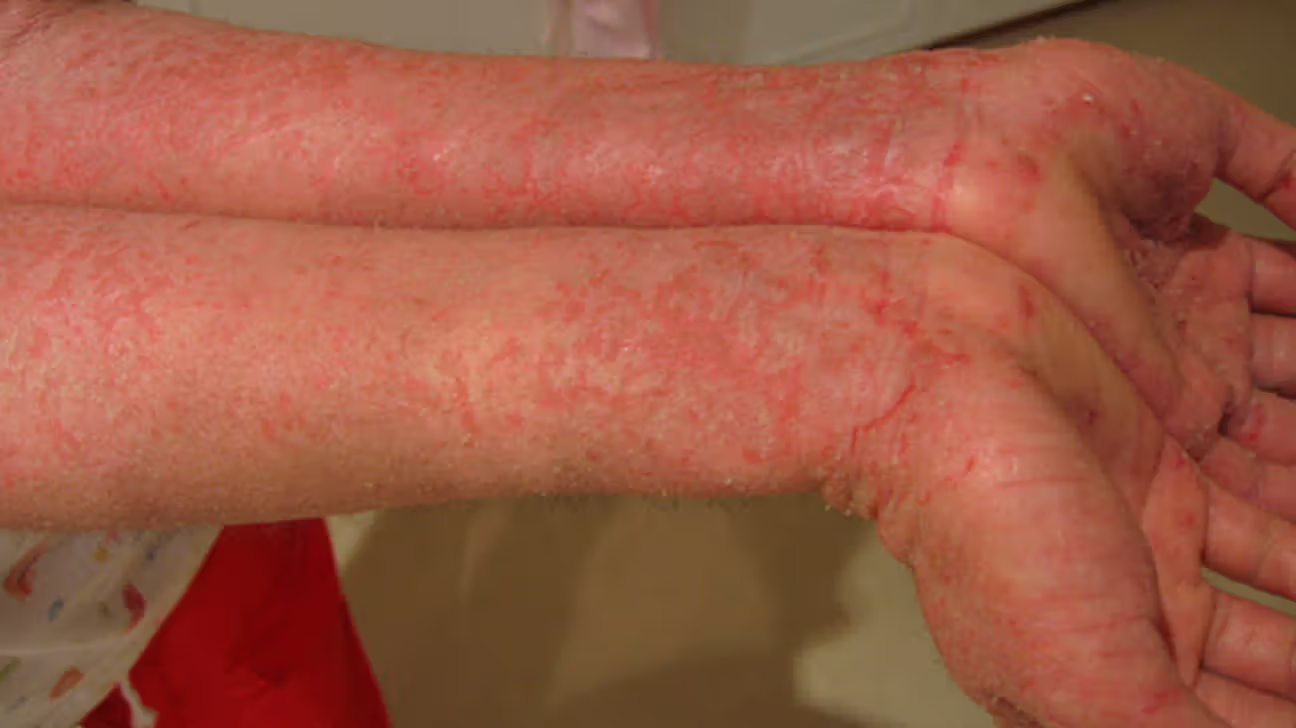
Sometimes a patch of skin turns red. You haven’t changed products or eaten anything new. But irritation begins quietly. Then the color deepens, the area warms, and discomfort spreads. Your skin reacts without explanation.
This redness doesn’t always follow contact. Sometimes it’s delayed. Hours or even days pass. Then, suddenly, your skin speaks. The cause may never be obvious. Skin often responds to invisible changes: air particles, stress, or internal shifts.
What appears on the outside may begin far beneath the surface.
Itching becomes persistent even when nothing touches your skin
You scratch without thinking. The itch wakes you up at night. It travels—arms, neck, scalp. But your skin looks normal. No rash. No swelling. Still, the sensation continues.
This kind of itching isn’t always allergic in the traditional sense. It may result from histamine imbalances, nervous system signals, or microbiome shifts. The skin is alert, even when there’s no clear threat.
The itch isn’t a response to pressure—it’s a message from your immune system.
Some reactions appear hours after exposure and confuse diagnosis
Allergic responses don’t always arrive quickly. Some appear long after contact with a trigger. This delay makes identification difficult. You might blame today’s lunch, unaware yesterday’s shampoo was the cause.
This timing mismatch complicates diagnosis. The immune system sometimes takes time to respond. It gathers information, alerts cells, then reacts. What seems unrelated might be closely linked.
A delayed rash is still a message, just sent on a slower channel.
Skin often reflects internal inflammation before digestive or respiratory symptoms
Your skin may be the first to react. Before your gut complains or lungs tighten, rashes appear. This happens because the skin is an immune organ. It contains cells that detect invaders and signal distress.
When your gut is inflamed, toxins may circulate through the blood. The skin receives them first. This leads to flushing, hives, or dryness. You may never feel stomach pain. But your skin tells the story.
Visible signs often start on the surface, even when the origin is hidden.
Some people develop hives from pressure, heat, or even water
Allergies don’t always involve food or pollen. Physical triggers can cause skin reactions. Pressure, sunlight, cold, vibration, or even water can create rashes. These conditions are called physical urticarias.
They are not psychosomatic. The skin reads the environment and overreacts. You may wear tight socks and develop hives where the fabric pressed. Or sweat during exercise, only to feel burning welts appear.
The trigger isn’t emotional. It’s physical, and your skin registers it clearly.
Emotional distress can alter your skin’s reactivity without warning
Anxiety doesn’t just live in your chest or thoughts. It lives in your skin, too. People under stress often experience flare-ups of eczema, psoriasis, or unexplained rashes. These reactions are not imagined. They are chemical.
Cortisol, the stress hormone, affects immunity. It can thin the skin’s barrier or intensify inflammation. The result is more sensitivity. Your skin responds as if under attack, even when no allergen is present.
Emotion and immune response often share the same pathway.
Reactions to skincare products may build slowly over weeks
You try a new moisturizer. It feels fine at first. No stinging, no redness. But after a week, dryness appears. Then small bumps. Then flaky patches. You may not connect the reaction to the product.
Slow-onset contact dermatitis develops gradually. It’s not like an instant rash. It builds through repeated exposure. Over time, your skin grows tired of the formula. Then it pushes back.
Tolerance doesn’t always mean safety.
Some allergens penetrate skin even without visible damage
You assume your skin is intact. No cuts, no scrapes. But tiny molecules can still enter. Certain allergens are small enough to pass through healthy skin. These include metals like nickel, fragrances, and preservatives.
Once inside, these particles meet immune cells. A reaction begins. Swelling, redness, and itching follow. But the entry point remains invisible. The skin appeared sealed, but it allowed intruders.
Barriers fail quietly—and reactions begin invisibly.
Patch testing may not detect all real-world triggers
You undergo allergy tests. Results return negative. But your skin still flares. What’s happening? Sometimes patch testing misses real-world exposures. Because your environment is complex.
Air quality, moisture, and chemical combinations change how allergens behave. The same substance might cause no reaction in a test but inflame your skin in real life. Skin isn’t reacting to one thing—it’s reacting to a context.
Your skin knows more than the lab can replicate.
Seasonal changes can affect your skin even without direct allergen contact
Winter dries skin. Summer increases sweat. Spring adds pollen to the air. These seasonal shifts alter how your skin behaves. Even if you never touch an allergen, reactions may increase.
Changes in temperature, humidity, and sunlight exposure influence the skin’s barrier function. In colder months, it becomes thinner. In humid weather, it absorbs more. This makes it more vulnerable to allergens already present in your system.
Your skin reads the season before you do.
